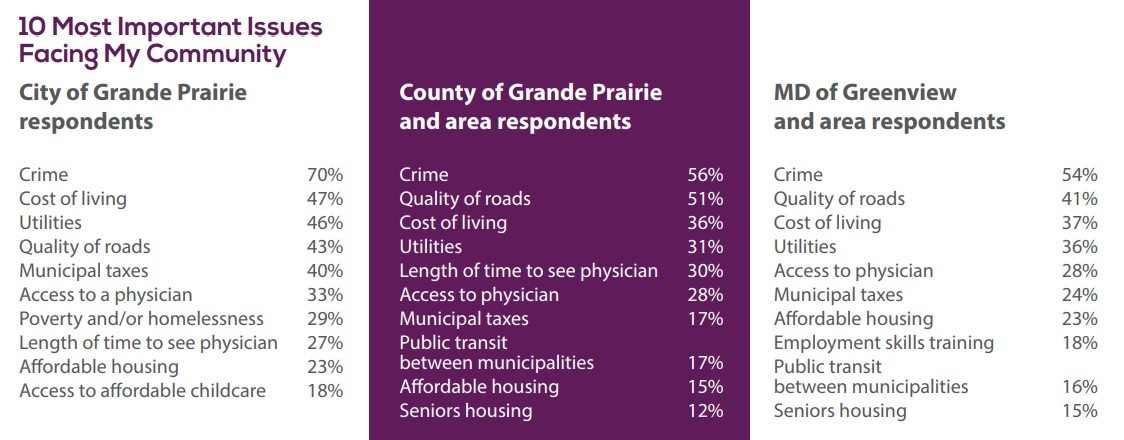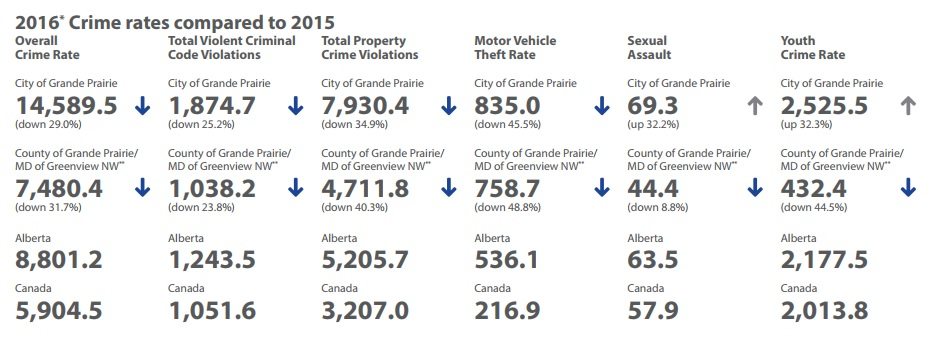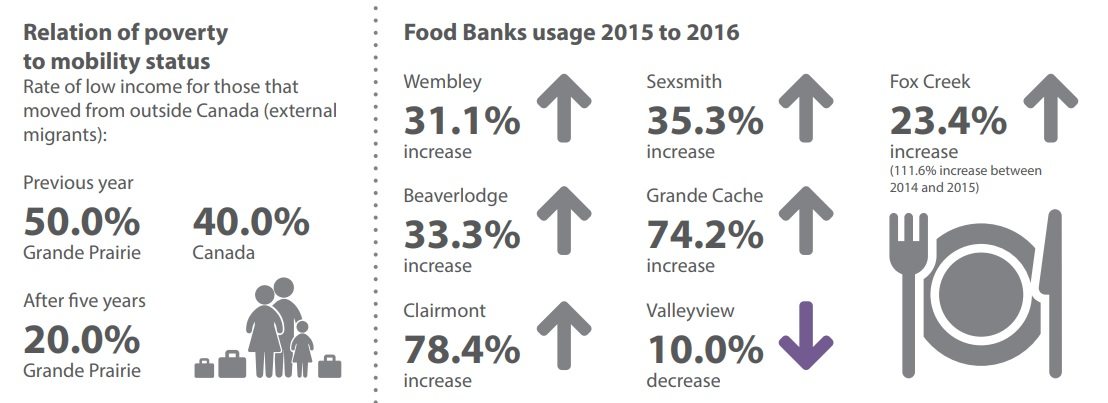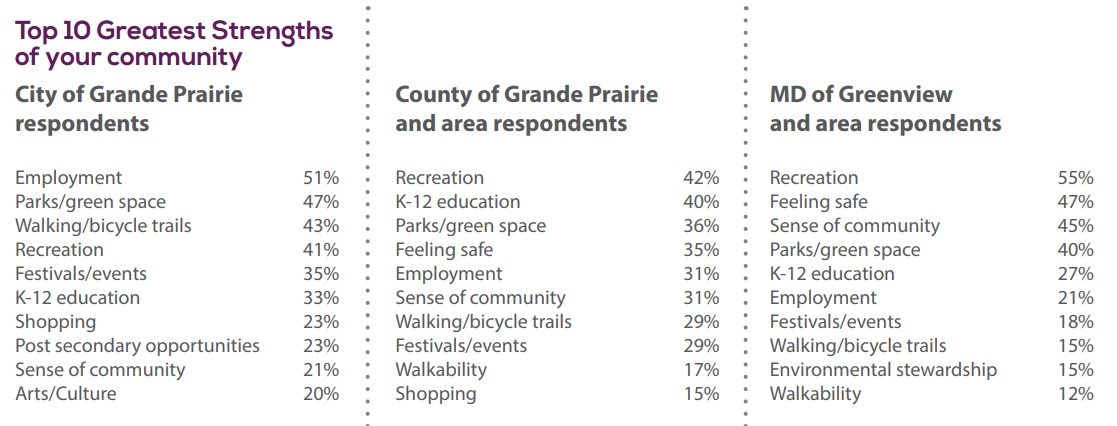In the two years since the Community Foundation of Northwestern Alberta released its last Vital Signs report, there have been some notable changes in the quality of life for people living in the City and County of Grande Prairie and the MD of Greenview. CEO Tracy Vavrek says that while crime stats are down almost across the board from 2015 to 2016, residents still see it as the biggest issue in their communities.
“We don’t take that lightly; that’s important that our citizens have spoken that. [Crime] traditionally decreases when we see additional support brought in, we see additional officers brought in, so through our systems we are seeing as a result of the supports definitely a decrease.”
Crime rates have also fluctuated with the economy, and Vavrek argues it’s starting to show strong signs of improvement. Permits issued to over dimensional vehicles traveling through Grande Prairie have nearly doubled over the past year, and the unemployment rate for the region has dropped by two per cent.
“We’re not certain what that will represent, but traditionally in the past we’ve seen crime increase when the economy increases, so as a community that’s something for us to be attentive to and also consider how we as a community can talk about it and share and be connected so hopefully we don’t have an increase.”
This year’s Vital Signs survey was taken by 1,661 people in all three communities. It was the first time the MD of Greenview was included. The report combines the results with data from sectors like health, arts and culture, housing, education and the environment. Vavrek says the focus of the 2017 study was on belonging.
“That sense of belonging is important because that helps to strengthen communities in all sectors. When people feel they belong, we know that they’re healthier, we know that crime rates drop; we know that when they feel they’re wanted and accepted within their workplace, they do better.”
Vavrek adds that children who feel like they belong are more successful socially and academically. She also stresses the importance of food security, especially for students in school.
“Food security is not just that we need to have food in our cupboards, but it’s also looking at do we have healthy foods? Do we have foods that will be able to ensure that our children and our families have fresh apples, fresh vegetables, etc. and we have them available?”
Other concerns highlighted in the document are a lack of familiarity with the Truth and Reconciliation Commission, and low voter turnout.
Now that the report has been released, Vavrek says it’s up to community members to find ways they can look at emerging issues and opportunities. The next step is finding solutions.
“It’s not like we’re saying our community is in a bad place, because it’s not. We have some areas we can improve upon, and some areas we can increase upon and we can strengthen, so now is the opportunity for us as a community to do that.”
In the past, Vital Signs reports have led to new partnerships and programs, like increased safety measures at Grande Prairie Regional College and the YMCA’s Virtual Y program. Vavrek warns many initiatives can take years to come to fruition.
The full 2017 Vital Signs report can be found here.






